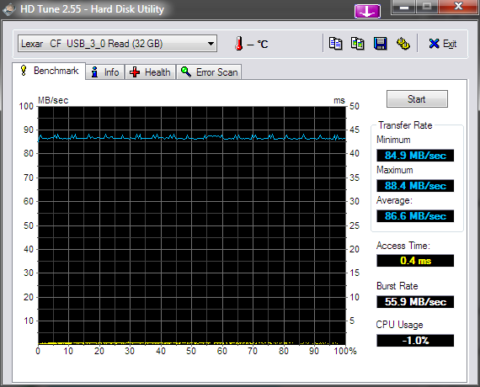Goodbye USB2, Hello USB3
When I upgraded my workstation 2 years ago to a Sandy Bridge Core i5, I also added to the mix a pair of USB3 ports. Until now, I’ve had absolutely no use for them. My external storage needs are covered by a eSATA dock and or by gigabit Ethernet to my networks file server. Flashcards were handled by my venerable SandDisk Extreme USB 2 dual slot reader, and that was fast enough. Right?
Well I thought it was until I got my Canon 5D mark III, and started filling 16 and 32GB flash cards like they were 8GB cards in my 1D mark III. Video was even worse. Okay sure, waiting 15 minutes for a 16B card to download at at <20MB/s isn’t exactly world ending but being able to do it in less than 5 at almost 90MB/s is wow.
…or a Non-Review of the Lexar USB 3.0 Dual Slot Reader…
My sole USB3 device now is a Lexar Professional USB3 Dual-Slot reader, and honestly, there’s not a whole lot to say about it. The connector is different, and unlike the SanDisk reader, it pops up from the base/case/cover. As a portable device, I guess I can see the utility of that; as something I have mounted to my desk so it doesn’t slide around, the popup bit is just silly.
…or When is a 400x Card not a 400x Card…
The real surprise out of all of this was in fact just how fast my 400x Lexar cards actually were. Compact Flash cards use the same silly x rating system that CD-ROM disks used, that is 1X is equal to 150 kilobytes per second (KB/s). By that measure a 400x card should read and write—assuming they’re equal but they’re not—at 60,000 KB/s, or about 58MB/s.
In reality, it takes longer to write a flash cell than it does to read it but you’d expect that for a 400x card you’d see numbers somewhere around 50-58MB/s. You’d think that at least.
Read performance form a 32GB Lexar Professional 400x card nets me a download speed of on average 86.6MB/s. In Compact Flash card Xes that’s equal to almost 600x. Not bad if you ask me.
Likewise, write speeds push 45MB/s, as show in the powershell excerpt below copying a 1024MB test file to the 32X Lexar Pro card.
PS D:test> Measure-Command { cp test.bin h: }
Days : 0
Hours : 0
Minutes : 0
Seconds : 22
Milliseconds : 457
Ticks : 224571433
TotalDays : 0.000259920640046296
TotalHours : 0.00623809536111111
TotalMinutes : 0.374285721666667
TotalSeconds : 22.4571433
TotalMilliseconds : 22457.1433
As an aside, even my old 30MB/s SanDisk Extreme III cards are now moving data at their full potential, 28MB/s instead of the ~18MB/s I was managing on the old USB2 reader.
As a random closing thought, I don’t know if my 5D Mark III can hit the same numbers my card reader can, but apparently, Canon’s H.264 codec hit’s it stride when it can write out at 100 Mbps (megabit per second). 100Mbps is only 12.5 MB/s worth of data, which means that if the camera can do remotely as good as the card reader can for writes, I can easily hit that mark without buying really expensive 1000x UDMA7 cards.
So there you go. For $35 you can pick up a Lexar USB3 reader and get some crazy performance out of your cards. Plus, apparently this reader is flash upgradeable, since Lexar already had a firmware upgrade for UDMA7 support.
